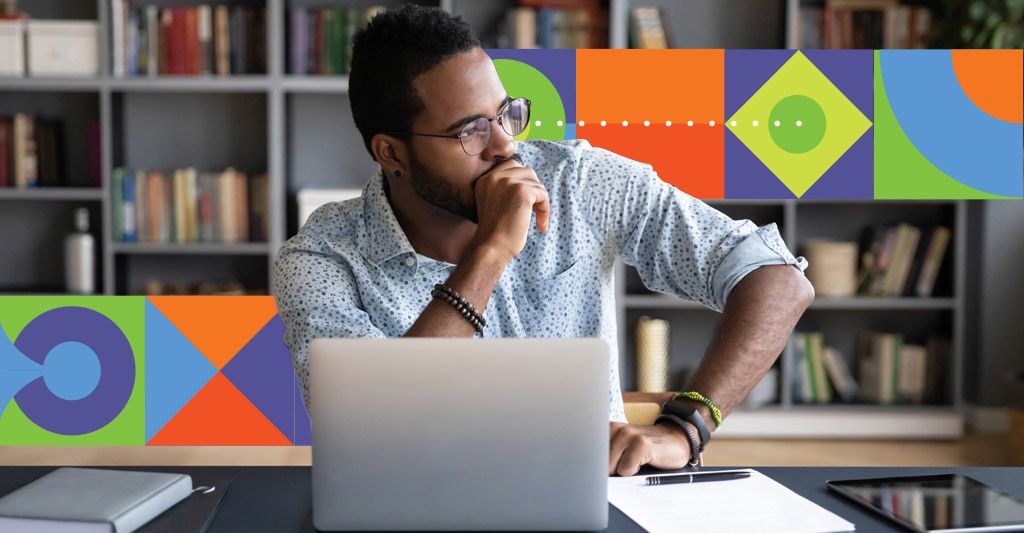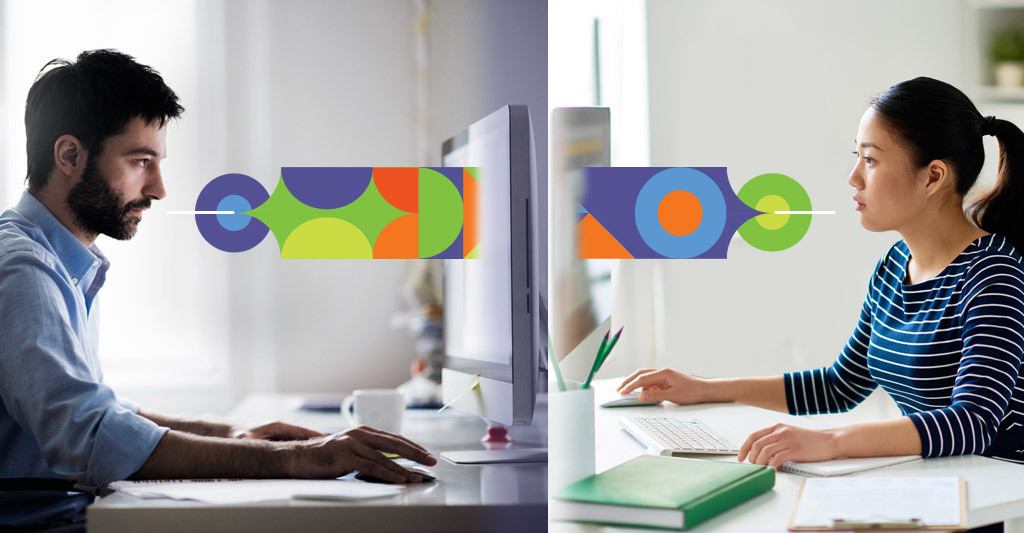Superpowers For Learning Designs That Save The Day
Before delving into virtual design thinking and its benefits, let's explore the tale of three teams. Once upon a time, my company, SweetRush, partnered with three very different clients, each with a vastly different need:
- A nonprofit focused on preventing child abuse needed a virtual learning program to teach children in grades K through 12 to protect themselves against sexual abuse.
- A worldwide leader in hospitality needed to launch a new hotel brand—and upskill employees across job roles.
- A consumer products company with a global reach needed a program to train its HR professionals to integrate data into their decision process.

On the surface, these three organizations had nothing in common. But as we engaged the teams, we found that all three shared a learning need that was:
- Sticky
Open-ended, with no single “right answer” - Impactful
Meaningful for a lot of people or a particular group - Dramatic
Provoking trepidation, passion, and opinion - Frameable
Possible to formulate or frame as a “How might we…?” question
Guess what else they had in common. They were perfect use cases for using design thinking to craft their learning solutions [1].
Design Thinking: Great Power Meets Great Responsibility
Like any superpower, design thinking must be used responsibly. It requires a willingness to explore—and be guided by—learner needs. From initial interviews to the testing of multiple prototypes, hearing from the audience is a must.
CoDesign™, SweetRush’s brand of design thinking, brings learners together with L&D professionals, stakeholders, and SMEs for a creative and collaborative experience. Together, they work through the 5 stages of design thinking: empathize, define, ideate, prototype, and test.

And because of this year’s challenges, “together” meant “virtually.”
To accommodate the virtual environment, we broke our intense two- to three-day live schedule into briefer sessions, spaced out over a few weeks.
Now for the responsibility: Each team member had to commit to working without distractions. That meant closing competing browser tabs, setting phones to silent, and giving other projects the back burner for as long as it took to complete each stage.
4 Superpowers: The Benefits Of Virtual Design Thinking
Virtual design thinking isn't right for every project. But teams who use it for the right learning challenge—one that’s sticky, impactful, dramatic, and frameable—will experience 4 key benefits. The first two are internal and team-facing, whereas the final two are learner-facing and thus have a wider range.

1. Stronger Teams
One of the first powers teams unlock in their virtual design thinking experience is an understanding of everyone’s ideation and sharing styles. The SweetRush Creativity Ecosystem helps team members put a name to traits such as mental processing speed and comfort level in speaking up.

Discussing their “creative creatures” helps team members gain an appreciation and a common language for how everyone contributes to the team ecosystem—and how to create opportunities to hear from everyone. Knowing that your teammate is a Sloth to your Peregrine Falcon also helps smooth over the misreadings that can plague virtual communications. Teammates also bond during CoDesign, which helps them navigate bumps that may occur later on in the project.
To our surprise, we found engagement to be higher during virtual design thinking sessions than during live ones. Lauren Granahan, SweetRush Director of Organizational Effectiveness and CoDesign Master Facilitator, observed that using virtual tools like Mural lowered the barrier to participation by eliminating the physically awkward aspects of collaborating. “You can see everything,” she notes; “you don’t have to get up and walk across the room to see a post-it.”
2. Faster Projects

Briefer, more spread-out sessions also supported the team members’ engagement in the virtual design thinking process. With a week or more to reach the prototype stage—rather than one or two days—the team’s prototypes of possible learning solutions were far more developed, far earlier in the process.
To hone the prototypes, the facilitators tailored modular activities to fit every team. Hole-poking was a particularly useful activity. In this exercise, small groups “poked holes” in a prototype by weighing it against the business need, constraints, and information gathered in learner interviews. They then passed the prototype to the next group, who refined the solution to address the “hole pokes” and improve the design.
These improvement and iteration cycles help prototypes to fail earlier—and fail better. This advantage shaves an average of 34 business days off project timelines!
3. Learner-Centric Solutions

Virtual design thinking superpowers aren't confined to the development team; they also permeate the learning solutions.
Because they had direct access to their learners, the teams had better information throughout the entire process. Early-stage interviews helped them step into learners’ work environments and explore what happens before, after, and during the moment of need. Learners’ preferred modalities—podcast, video, job aids—and emotions surrounding the learning need were also teased out.
Learning programs often need to address learner uncertainty, ambivalence, and even negativity. Two of our three organizations—the worldwide leaders in hospitality and consumer products, respectively—discovered that their learners needed not only new skills but also new mindsets.
“Talk shows” unpacked learners’ feelings about the reskilling journeys and helped the teams understand learners’ concerns. Just as a superhero can swoop through a crowd and rescue someone in trouble, the teams saw through the emotional “noise” of reskilling and built encouragement and respect into the solution.
4. Stronger Solutions

The Empathize Phase
Solutions generated through virtual design thinking don’t just work better for learners. They’re also more targeted to business needs.
Speaking to learners early and often helps weed out assumptions and mitigate the risk of going all-in on an ineffective solution. For example, one business stakeholder assumed that a high-tech, Virtual Reality, mobile learning solution would be ideal for a cohort of recent college graduates. However, when we talked to the learners, we discovered that they felt overwhelmed by the volume of information they had to absorb. They pleaded for a low-tech, slower-paced solution.
If not for the interview, the mismatch between assumption and reality would have been discovered too late. The high-tech solution would have overwhelmed and exhausted learners—and inhibited learning.
With the best of intentions, we sometimes make unfounded assumptions about learners, from assuming a monolithic audience to overgeneralizing from our own perspectives. Unquestioned assumptions are Kryptonite to a learning solution design.
The Test Phase
Virtual design thinking also gets early prototypes of the learning solution in the hands of actual learners. Once again, the advantage is to fail faster—and better.
For example, during testing the child abuse prevention team discovered that their young learners were still working on reading skills well into the third grade. That finding led them to incorporate more audio into the learning solution design to ensure that all learners had equal access to critical information.
The stakes were especially high in this case, but any learning solution is vulnerable to missteps that can impede learning. Observing how learners interact with the solution helps teams revise their prototypes and verify that their revisions address issues—without introducing new ones.
As a result, teams leave the virtual “table” with more functional prototypes of their learning solutions, which they can check against learning objectives, business needs, budget, and time constraints—and refine still further.
And teams leave with a better understanding of the entire ecosystem needed to support their training solution. Non-training-related issues, such as poor incentives, a company culture that promotes contradictory values, or even lack of supplies, also bubble up in conversations with learners and stakeholders. In many instances, training isn’t the only intervention needed to solve performance issues. The team may ultimately decide to roll out the learning solution alone but, thanks to testing, they’ll do so knowing the risks.
That responsibility to process all of the learner information and make the best recommendation—risks and all—is the flip side of these 4 superpowers.
Virtual Design Thinking Powers, Activate!
Are you staring down a learning challenge of your own that is sticky, impactful, frameable...and maybe even a bit dramatic? Is your team—and your leadership—ready to undertake the sometimes frightening but always enlightening process of listening closely to your learners’ needs?
If your answers to both questions were a resounding “yes,” congratulations! You’ve got a use case for design thinking.
We’ve got something for you as you embark on your hero’s journey toward a stronger learning solution—and a stronger team—through virtual design thinking. Our eBook, Virtual Training—SweetRush Style: 5 Inspiring Case Studies For A Learner-Centered Approach, is full of stories, challenges, and creative solutions from five organizations that found five very different paths to meet their learners’ needs. Let their experiences inspire and guide you as you explore your new superpowers. Also, join the webinar and get to discover how to inject more creativity in your virtual learning programs.
References:
[1] Design Thinking: Creating Authentically Learner-Centric Solutions










